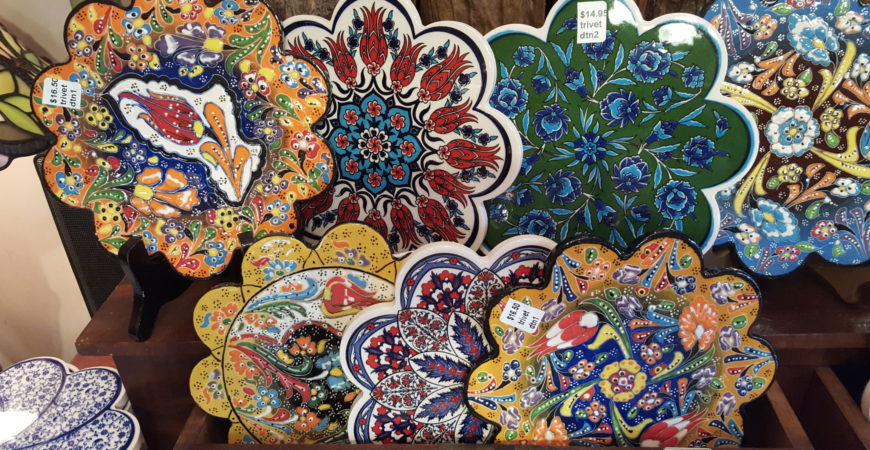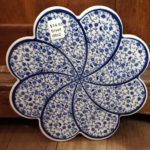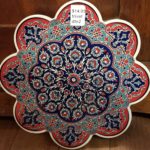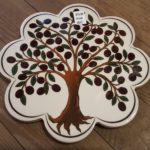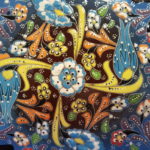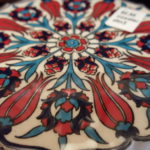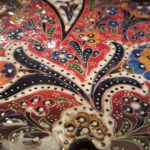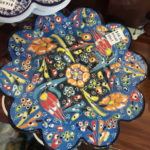One of our recent market finds are these colorful sturdy ceramic trivets made in Turkey using a traditional Iznik Turkish ceramic art process. We brought in 2 styles – one a relief process and the other a flat 2 dimensional process. Within each style, are many motifs using geometric, floral and kufic patterns as well as many colors. Turquoise, blue & white & red seem to be the dominate colors.
From a website about Turkish Tiles I found: Ottoman ceramic art reached it’s zenith in Iznik (formerly known as Nicea) encouraged by the patronage of the Ottoman Court. The splendour of Iznik high fired pottery and tile manufacture reached it’s peak in the 16th Century and is unlike anything else produced in either the East or the West with designs more complex and balanced. During those times there were once over 300 ceramic workshops, according to the Ottoman travel writer Evliya Çelebi from Kütahya.
In this period ceramics were used in architecture to fill three dimensional space and also for everyday use as ornamentation of plain surfaces. The things which make Ottoman ceramics invaluable are their strength which challenges centuries, the unfading dynamic colours which are vividly translucent and harmonious, and the unique use of stylized motifs such as the lotus, the tree of life, plant and flower motifs (some of which carry deep and meaningful explanations).
The raw materials used for ceramics are kaolin (60%), which is high in silica content, clay (20%) and calcite. After successive processes, that include ball mining and filter pressing, the compound is ready for the potter’s throwing wheel where it is moulded by hand into vessels such as vases, tankards or jars. The resulting wares are then covered with a thin coating of ‘slip’ to make the body whiter. They are then fired at a temperature of up to 950-980 degrees Celsius to obtain the ‘biscuit’ on which the motives are drawn, painted, glazed and fired once again to achieve the final product.

